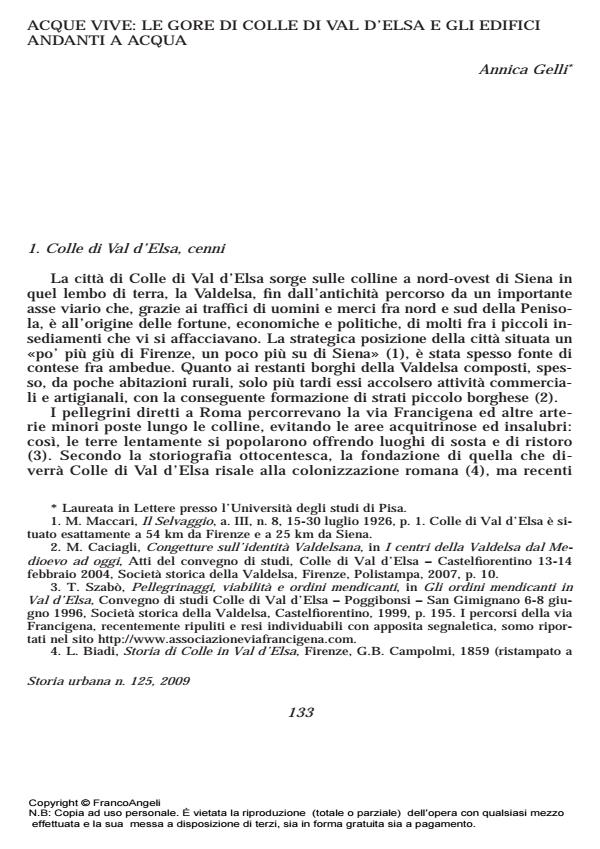Acque vive: le gore di Colle di Val d'Elsa e gli edifici andanti a acqua
Journal title STORIA URBANA
Author/s Annica Gelli
Publishing Year 2010 Issue 2009/125
Language Italian Pages 17 P. 133-149 File size 921 KB
DOI 10.3280/SU2009-125007
DOI is like a bar code for intellectual property: to have more infomation
click here
Below, you can see the article first page
If you want to buy this article in PDF format, you can do it, following the instructions to buy download credits

FrancoAngeli is member of Publishers International Linking Association, Inc (PILA), a not-for-profit association which run the CrossRef service enabling links to and from online scholarly content.
Running waters. The Gora of Colle di Val d’Elsa and its factories which worked on water power - Water Tuscany Colle Valdelsa Water Canalization Paper Mills The town of Colle di Val d’Elsa owes its development to the presence of water, and to factories which were run by water. In the valley below the medieval settlement of Onci, perennial springs were canalized to flow into the Elsa river. During the seventeenth century the only way to take advantage of these streams was to gather them together into one single artificial canal, the Gora. Taking advantage of the natural morphological flow of the terrain, the Gora reached the core of the lower town, a plain area where a true pre-industrial manufacturing district arose. More canals were created by splitting it up and ever more buildings running on water power, such as fulling-mills, flour mills but most of all paper mills, were established. During the eighteenth century, the power of the water, amplified by means of waterfalls, managed to operate no less than seventeen workplaces, but the crisis in the paper industry amplified the rivalry between the owners. It is this period of economic recession that produced the most interesting cartographic documentation and the most interesting works of hydraulic engineering, by the hands of Ferdinando Morozzi and other engineers working for the Grand Duchy of Tuscany, whose intervention was required by the town council.
Annica Gelli, Acque vive: le gore di Colle di Val d'Elsa e gli edifici andanti a acqua in "STORIA URBANA " 125/2009, pp 133-149, DOI: 10.3280/SU2009-125007